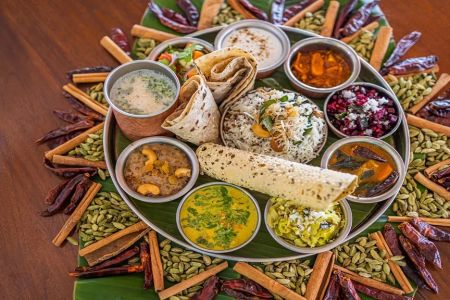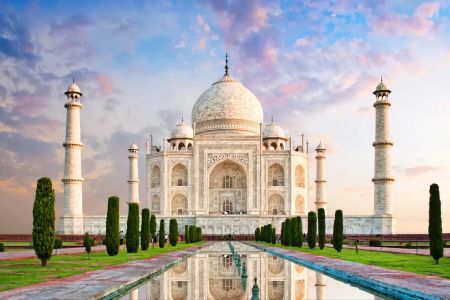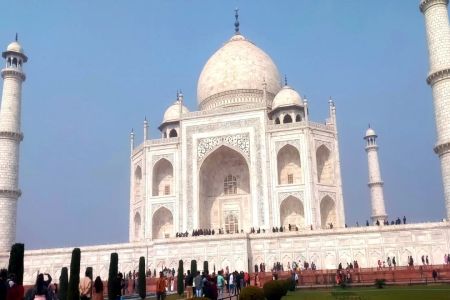How to Plan a Trip to India with a Limited Budget
As someone who loves traveling but also values financial stability, planning a trip to India on a budget seemed like an exciting yet daunting challenge. With a rich cultural history, diverse landscapes, and a variety of experiences, India is a dream destination for many travelers. However, I quickly realized that traveling in a country as vast as India requires a good plan—especially if you want to explore the best of it without breaking the bank. Here’s how I managed to plan an affordable yet unforgettable journey to India while staying within my budget.
1. Researching Affordable Destinations in India
India offers an incredible variety of destinations, from bustling cities like Delhi and Mumbai to serene hill stations like Manali and Darjeeling. Each region has its own charm, but I knew I needed to choose areas that would fit my budget. Some places in India are more expensive than others, so I began by researching affordable regions.
1.1 Low-Cost Destinations to Consider
Some of the most affordable cities and regions in India include Rishikesh, Varanasi, and Jaipur. I found that northern and central India offer many budget-friendly options for tourists. For instance, Rishikesh, known for yoga and spirituality, not only offers affordable accommodations but also plenty of free activities like river rafting and temple visits. In contrast, places like Goa or Kerala can be pricier, especially during peak tourist seasons.
1.2 Avoiding Peak Seasons
One key tip I followed was avoiding peak tourist seasons. The months of December through February are high season in India, and this is when prices for flights, hotels, and tours can skyrocket. I decided to travel during the off-season, from March to May, which significantly reduced my expenses. This allowed me to explore without the crowds and with lower prices on nearly everything.
2. Finding Affordable Flights
The next step in planning my budget trip was figuring out how to save on flights. Flights to India from the US can be expensive, so I was keen on finding a cheap deal.
2.1 Using Flight Comparison Tools
To start, I used flight comparison websites like Skyscanner and Google Flights to track the best deals. I set up price alerts to notify me when there was a significant drop in flight prices. I also compared flight options with multiple layovers versus direct flights. While the direct flights were quicker, the multi-layover flights were significantly cheaper.
2.2 Booking in Advance
Another strategy I used was booking my flight at least two to three months in advance. This is a general rule for cheaper flights, but it worked wonders for me in this case. I also considered flying into major international airports like Delhi or Mumbai, which tend to have more affordable flight options compared to smaller airports.
3. Affordable Accommodation Options
Once I had my flights sorted out, the next challenge was to find budget-friendly accommodation. India has a wide range of accommodations, from luxurious hotels to hostels and guesthouses. Given my budget, I focused on the more affordable options without sacrificing comfort and cleanliness.
3.1 Staying in Hostels and Guesthouses
For most of my trip, I stayed in hostels and guesthouses, which offer affordable rates and a chance to meet other travelers. I also discovered that Airbnb is a great option for booking budget stays with local hosts, providing a more personalized experience. In cities like Rishikesh and Jaipur, I found beautiful guesthouses offering private rooms for as little as $15-25 per night.
3.2 Booking Accommodations in Advance
Just like with flights, I found that booking accommodations in advance saved me a lot of money. Websites like Booking.com and Agoda provided great deals on well-reviewed properties, often with free cancellation options. By booking a few weeks ahead, I secured good deals and avoided price hikes due to last-minute bookings.
4. Cost-Effective Transportation in India
Transportation can quickly eat into your travel budget, but India offers several cost-effective ways to get around. During my trip, I made sure to explore the local transportation options to avoid overspending.
4.1 Traveling by Train
One of the most budget-friendly modes of transportation in India is the train. India’s railway network is vast, and the trains are generally affordable. I took several long-distance trains during my trip, and while they were basic, they were safe and provided a comfortable experience. Booking tickets in advance via the IRCTC website allowed me to secure the cheapest seats, and sleeper class was a great option for overnight journeys.
4.2 Using Public Transport and Ride-Sharing
In the cities, I relied on local buses and metro systems, which are incredibly cheap. In addition, I used ride-sharing apps like Ola and Uber to get around in cities like Delhi and Mumbai. While taxis can be expensive, ride-sharing services often provide more affordable rates. I also used rickshaws in some areas, but I always made sure to negotiate the fare beforehand.
5. Enjoying Local Cuisine Without Breaking the Bank
One of the highlights of visiting India is the food. However, dining out at high-end restaurants every day can quickly drain your wallet. To make my food budget stretch further, I focused on enjoying local street food and visiting local eateries where the prices are much lower.
5.1 Street Food and Local Dhabas
India is known for its delicious street food, and I didn’t miss an opportunity to sample it. From chaat (a snack made of potatoes, chickpeas, and spices) in Delhi to vada pav (a local burger) in Mumbai, the street food was not only affordable but also an authentic way to experience local culture. I found that eating at dhabas (local roadside eateries) provided me with hearty meals at a fraction of the cost of more touristy restaurants.
5.2 Cooking Some Meals Myself
In addition to street food, I occasionally cooked some of my meals. Staying in hostels or guesthouses with kitchen facilities allowed me to prepare simple meals. Buying fresh fruits, vegetables, and basic ingredients from local markets helped me save a lot of money on food.
6. Free and Low-Cost Activities in India
India offers plenty of free and low-cost activities that allow you to experience the culture without spending a fortune. During my trip, I took advantage of these activities to make the most of my budget.
6.1 Exploring Temples and Markets
Many of India’s temples are free to enter, and they are some of the most beautiful and culturally significant places to visit. In Varanasi, I spent hours walking along the ghats, soaking in the atmosphere, and watching local life unfold. Similarly, markets in cities like Jaipur and Delhi offered a wealth of color and excitement without costing anything to explore.
6.2 Nature and Outdoor Activities
If you love nature, India has a plethora of hiking trails, beaches, and scenic spots that are free to visit. In places like Manali and Munnar, I went on hikes that were not only free but also offered stunning views of the Himalayas and tea plantations. These outdoor adventures were a refreshing way to experience India’s natural beauty while sticking to my budget.











